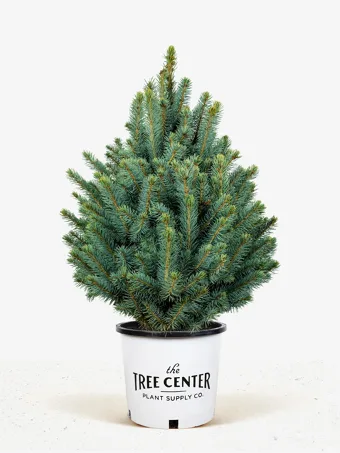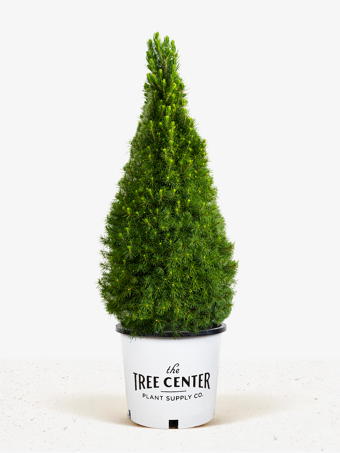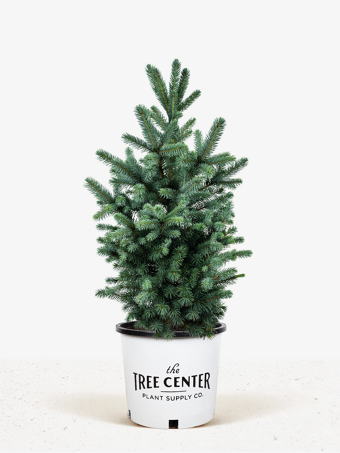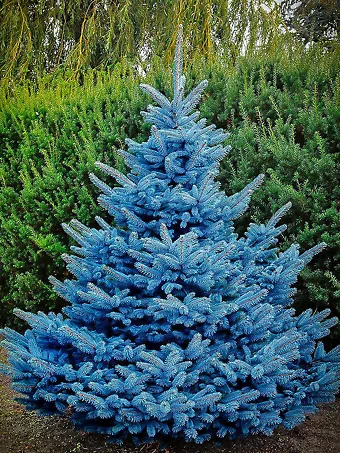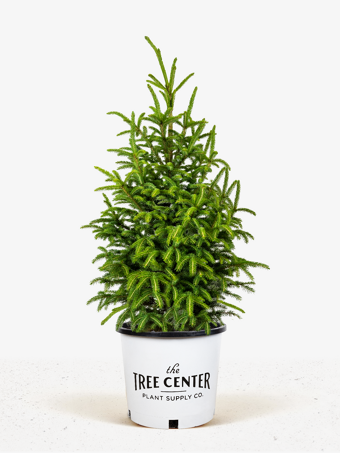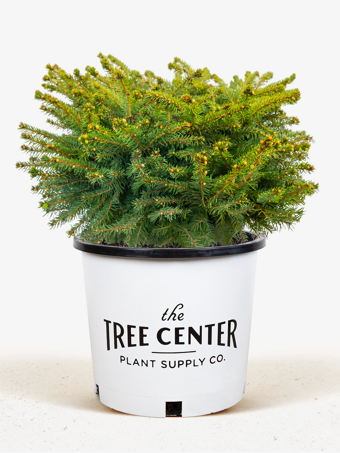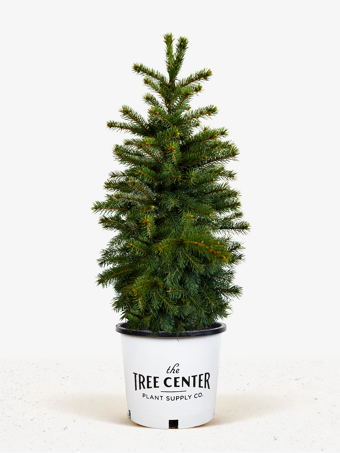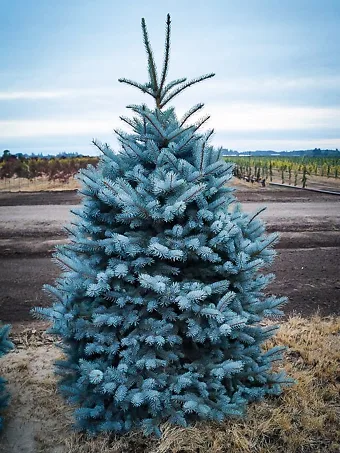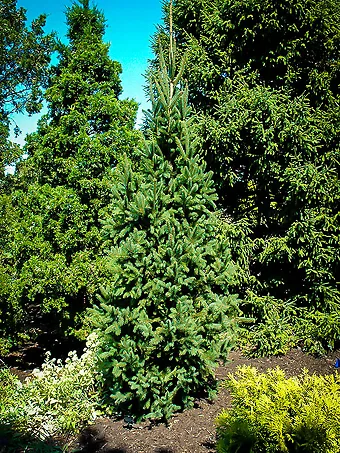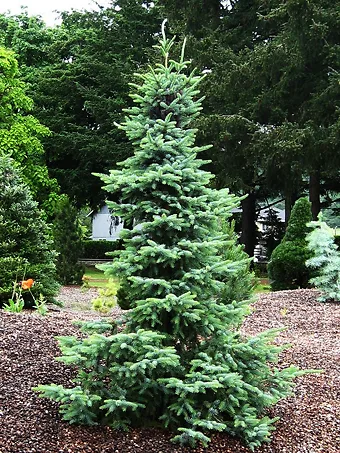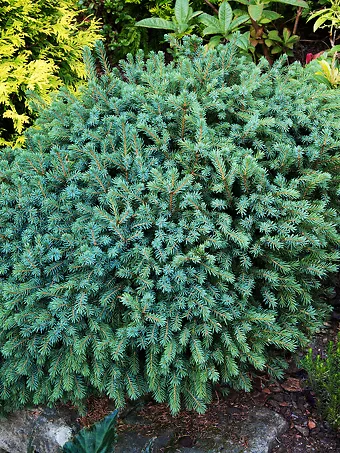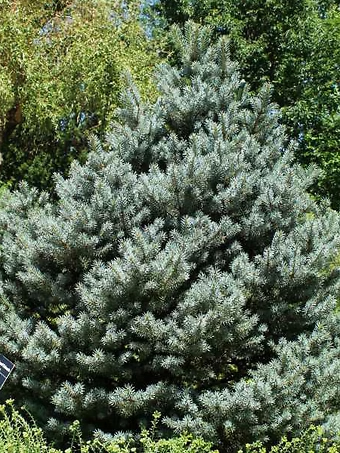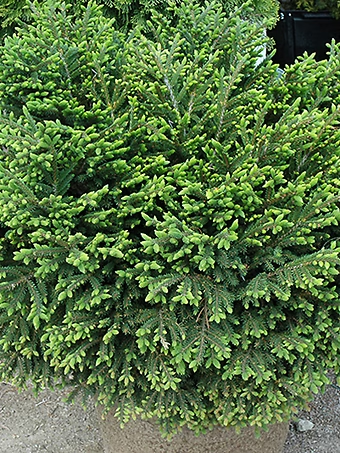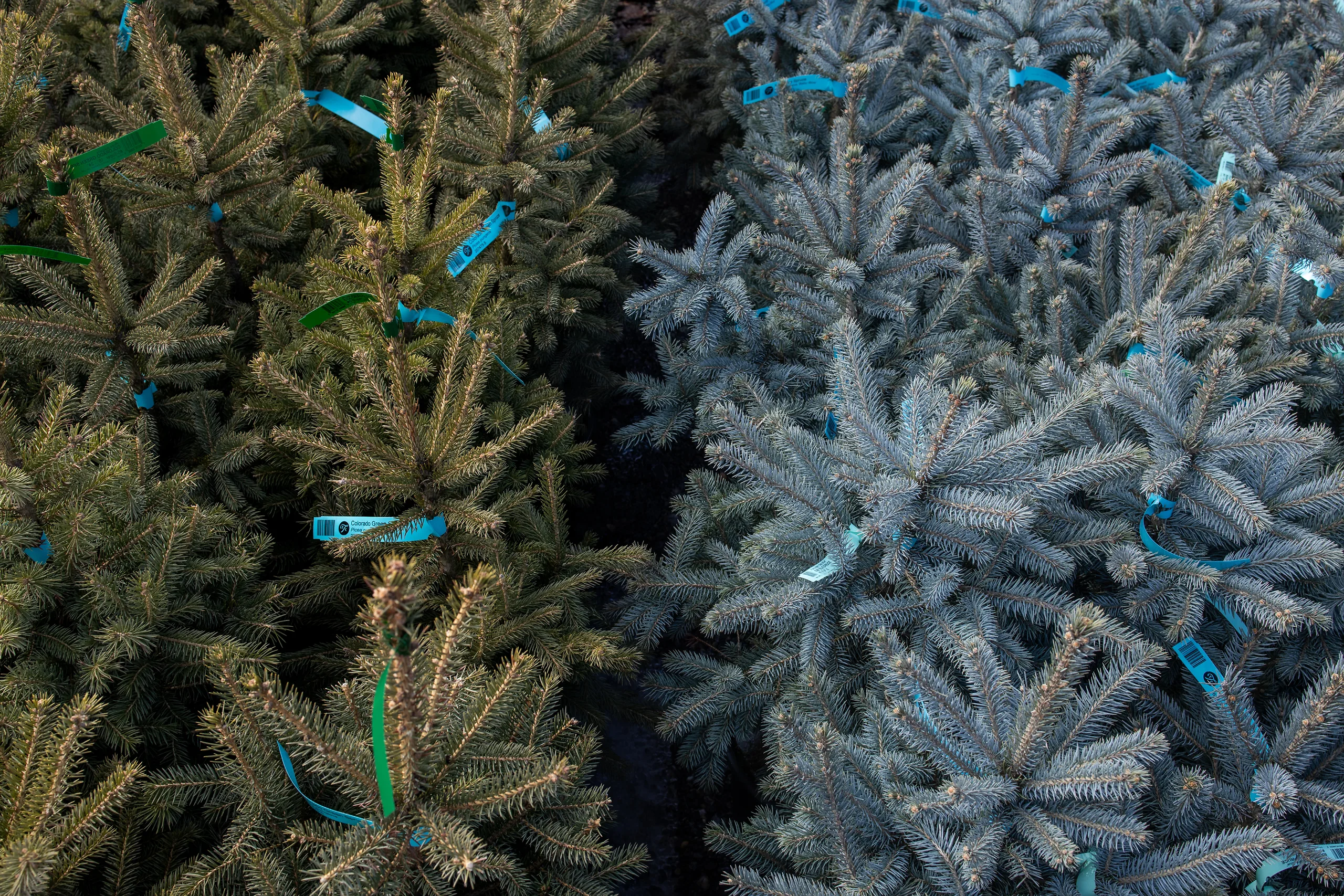
Written by s • Which Spruce Tree Should I Plant?
For most people, a ‘spruce tree’ is a silvery-blue pyramidal tree on a lawn in front of your house, that is also good for a Christmas tree. Very true, but there is a lot more to this group of evergreens, and if you decide to plant one, it’s worth thinking a little more before making your choice. What you want it to look like, how big you want it, and where you live, are all important questions to ask. After all, planting a tree is investing in the future, and it takes time to see the outcome of your choices, so it must be a decision worth putting some thought into.
Let’s take a closer look at these trees called ‘spruce’, so you can make the best choice, and not be disappointed – gardening should be a happy and satisfying experience.
What is a Spruce Tree?
Botanists recognize about 35 different species of spruce, which they call Picea, growing all around the northern half of the world. They are all big forest trees, with branches in layers around a central trunk, and needles growing singly out of the stems (not in bunches like pine trees). But for gardeners there are no more than 6 species that are of interest, most of which come in many garden varieties, from tall to tiny. We can leave the others to specialist conifer gardeners, who love to collect the rare and exotic. Among those six, though, gardeners have developed hundreds of special forms, grown for their foliage color, size and form. Some may be tiny mounds of foliage, other have weeping branches, and may need a stake to stand up at all, while others are small tight cones, or compact versions of the big forest original. Most of these novel forms were originally found growing on ‘normal’ trees, as clusters of different-looking branches called ‘witches’ brooms’.
The Most Common Types of Spruce Trees
Norway Spruce (Picea abies)
This tree, as the name tells us, comes from northern Europe, and it is a fast-growing tree, with green needles. Old trees are very recognizable by the long, weeping branches hanging from the main horizontal limbs. The needles are softer than in most other spruce trees. Most forms are hardy in zone 3 and they will grow all the way through zone 7, and even in zone 8 in the north-west, so they are a good choice for most gardens. This tree is not particularly drought resistant, and it’s not a good choice if you have dry soil and hot, dry summers. It’s a great tree for screening and as a tree for a specimen, if you have a large lawn. If you don’t, try the Columnar Norway Spruce (‘Cupressina’), which is tall but stays less than 10 feet wide.
For something completely different, the ‘Little Gem’ Norway Spruce is a tight ball of branches that makes an adorable round shrub for any sunny spot. Another popular variety is ‘Reflexa’, which is a weeping form with no central trunk. It can be trained up or allowed to cascade down a bank or over a wall, making a great feature.
Serbian Spruce (Picea omorika)
This is another European tree, not as hardy but more drought-resistant than Norway Spruce, and a perfect choice for zones 5 to 8. The natural tree is rarely grown, but several attractive forms are, including several popular dwarf and compact forms. These are similar, so look for names like ‘Nana’ or ‘Pimoko’ if you want a lovely compact evergreen shrub that will grow in any sunny location. There is also a very useful weeping form, usually called ‘Pendula’ that has a normal central trunk, but with weeping side branches, that makes an attractive and graceful lawn specimen. It needs no staking to grow straight, so it becomes a tall specimen in time. For something even more spectacular, look for the hard-to-find ‘Pendula Bruns’, a weeping form with a mind of its own about exactly how it grows – a really special tree.
Colorado Spruce (Picea pungens)
Now we are in North America, with the tree that most people recognize as a spruce. Although only growing naturally in a limited part of the Rocky Mountains, this tree has proved to be incredibly adaptable and tough. It thrives in zone 2, yet it is drought and heat resistant too, and grows just as happily in zone 8. So wherever you are, one or more of the many, many forms of this tree will be a great choice for any garden – no wonder it is miles ahead as the most popular species to grow. The most popular forms are the ones with bright, silvery-blue needles, the classic ‘blue spruce’, but there is also the natural form, sometimes called Green Spruce, which is a great choice for more natural settings, such as screening and windbreaks. There are so many forms to choose from it can become confusing, so look at the likely final size and you can find something you love, and that will fit in perfectly. For the best blue in a larger tree, ‘Hoopsii’ and ‘Fat Albert’ are classic favorites. If you need something smaller, check out ‘Baby Blue’, ‘Bakeri’ or ‘Baby Blue Eyes’. There are several weeping forms, such as ‘Glauca Pendula’, and compact forms too, that are perfect bright blue balls for small spaces.
White Spruce (Picea glauca)
The White Spruce can cause confusion among gardeners, because it is called Picea glauca, and sounds like it must be another ‘blue spruce’. It is not, but a different tree, and most forms are resolutely green. The most famous is the Dwarf Alberta Spruce, a long-time garden favorite in cooler zones, growing into a dense and lovely cone of bright green needles. If you want a larger dense, green cone for a lawn specimen, the Black Hills Spruce (P. glauca var. densata) is an absolute winner. At the other end of things, the variety ‘Humpty Dumpty’ is a super-cute fat little guy everyone loves. There are also forms with blue needles, but never as intense as the best of the Colorado Spruce. Generally hardy in zone 3, White Spruce does best in the cooler zones, and doesn’t enjoy lots of heat.
Sitka Spruce (Picea sitchensis)
This tree grows along the coast of the Pacific Northwest, so, as we might expect, it prefers to be near the sea, and it is only hardy to zone 7. If that works for you, it’s a beautiful tall tree for a larger garden, or to enhance your cottage. If you only have a little room, try the variety ‘Papoose’, a cute little baby tree that makes a lovely mound of branches for a special spot in your garden.
Englemann Spruce (Picea engelmannii)
Further inland in the same general area as the Sitka Spruce, we find Englemann Spruce. This is a tall forest tree, but hardy in zone 3, and more adaptable than the Sitka. Not widely grown, it does have some lovely varieties, so keep an eye out – it might suit you perfectly.
Hopefully this survey will give you some guidance on which spruce is which, and the ones that are most likely to suit your location and needs. These indispensable trees are the backbone of many northern and central gardens, so if you are starting one, don’t forget the spruce tree.
